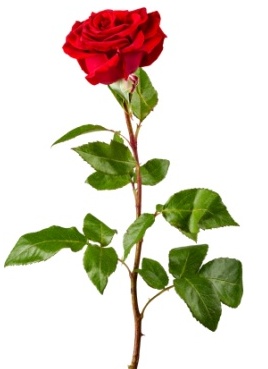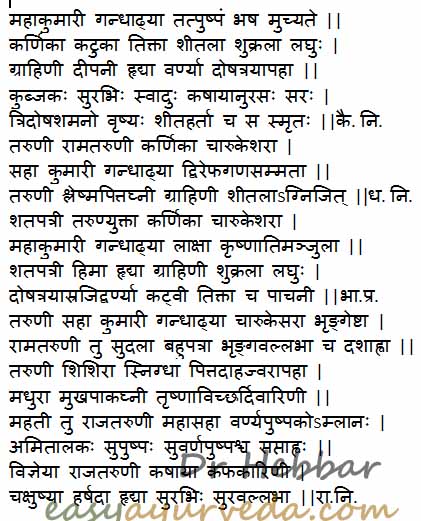Benefits, Ayurvedic Remedies Of Rose Plant And Essential Oil
Rose – Rosa indica Linn is commonly known as Indian cabbage rose. It is a plant which is abundantly cultivated throughout the world for its cosmetic value and medicinal purpose. It is medicinally used for blood purification, treatment of the intestinal ulcer, diarrhea and anti-inflammatory action. In India about 150 original varieties and more than 2500 hybrid varieties of roses are found.
Botanical name– Rosa indica (Rosa centifolia), Rosa damascena
Family– Rosaceae (Taruni Kula)
Table of Contents
Vernacular names
Names in different languages:
Hindi name – Gulab
English name – Rose
Kannada- Gulabihuvu
Telugu name – GulabiPuvvu
Sanskrit synonyms
Shatapatri- Having many petals
Karnika- Having big petals like ears
Laksha- Red colored like laksha
Gandhadya- Having good fragrance
Charukesara- Having good looking petals
Kantakapravrutta – having thorns
Dheera, Taruni,

Categorization
Classical categorization
BhavaprakashaNighantu- Pushpavarga
DhanvantariNighantu- Amradivarga
KaiyyadevaNighantu- Oushadhivarga
Raja Nighantu- Karaveeradivarga
Scientific classification
Kingdom:Plantae
Division:Magnoliophyta
Class:Magnoliopsida
Order:Rosales
Family:Rosaceae
Subfamily:Rosoideae
Genus:Rosa
Indian rose is commonly found and also cultivated throughout cold and temperate climatic part of India. It grows to a height of 1.5- 2 m with spikes. It is cultivated for its fragrant flowers which are used commercially. But the medicinal properties are found in the original variety of rose rather than in the hybrid cultivated variety.
Properties, part used, dosage
Rose: medicinal properties
Guna- Laghu (Light),Snigdha (slimy)
Rasa (Taste) – Tikta (Bitter),Kashaya (Astringent), Madhura (Sweet)
Vipaka- Madhura (Sweet after digestion)
Veerya (Potency) –Sita (Cold)
Karma- Tridosahara (pacifies all the dosha), Hridya (Strengthens the heart), Sukrala (helps in increasing the potency), Pachana (Help in digestion)
Pharmacological action – Antidiabetic, Antitussive, Immunomodulator
Part used:
Fresh or dried flower petals
Dosage:
Powder- 3 to 6 g
Distillate- According to the necessity
Distillate from flower- 20 to 30 ml

Chemical composition
Chemical composition rose plant:
The flowers and leaves contain 1.3% and 8.5% of saponin respectively. Petals contain methionine sulfoxide. The volatile oil from the flowers contains citronellol, geraniol, nerol, phenylethanol. It also contains 15% tannins.
The whole plant yields quercetin, kaempferol and cyaniding. The rose hip contains vitamin C, malic acid and citric acid.
Uses
Medicinal uses of rose:
- The paste of the rose petals or the powder of the dried petals is applied over the wounds for quicker healing.
- The paste of the petals is applied over the body to control excessive sweating and to give a pleasant smell.
- The extract of the rose petals is used as drops or eye wash in the burning sensation of the eyes.
- The dried paste of the petals of rose is taken internally in a dose of 5g along with milk to treat gastritis and duodenal ulcer.
- The decoction prepared from the rose buds in a dosage of 20-30ml in divided doses is used to treat constipation.
- Rosehip tincture is an effective astringent for treating diarrhea or in relieving colic or as a component in cough remedies.
- A gargle made from petal infusion of rose is used for sore throats.
- Creams from the essential oil of rose are used to treat dry or inflamed skin.
- The dried hips of the wild rose are especially high in vitamin C, having three times that of citrus fruits, and have long been used to prevent scurvy.
- Herbal tea prepared using rose petals is consumed to treat acidity, burning sensation in the body, dryness of the oral cavity and is effective against infection in the intestine.
- Rose essential oil is used in aromatherapy to treat insomnia and blood pressure.
- The rose extract or oil is used extensively in the cosmetic industry as an ingredient of soap, body wash, perfumes, body spray etc.

Sanskrit verse

Key actions of Rose:
- Anti-depressant
- Anti- spasmodic
- Aphrodisiac
- Anti-bacterial
- Anti-viral
- Antiseptic
- Anti-inflammatory
- Blood tonic
- Cleansing
- Digestive stimulant
- Expectorant
- Increases bile production
- Menstrual regulator
Health benefits, indications
Traditional health benefits of rose:
Shukrala – improves male and female reproductive system, improves semen and sperm quality and quantity
Grahi – absorbent, bowel binding, useful in IBS, diarrhea
Deepani – improves digestion strength
Hrudya – cardiac tonic, good for heart
Varnya – promotes skin complexion
Shishira – coolant
Pittahara – Balances Pitta
Dahahara – relieves internal burning sensation, seen in Pitta imbalance conditions such as gastritis, sore throat, laryngitis, sun stroke etc
Jwarahara – useful in fever
Indicated in –
Mukhapakaghni – indicated in mouth ulcers
Trushna – Excessive thirst
Chardi – vomiting
Varieties
Raja Taruni – bigger variety:
Kashaya – astringent
Kaphakara – increases Kapha Dosha
Chakshushya – useful in improving eye sight
Harshada – pleasant, useful in depression
Hrudya – cardiac tonic, good for heart
Kubjaka variety of rose – plant musk rose (Rosa moschata) is –
Swadu – sweet
Kahaya – astringent sub taste
Sara – laxative, promotes movement of liquids in channels
Tridosha shamana – balances all the three Doshas
Vrushya – aphrodisiac
Sheetahara – alleviates coldness
Ayurvedic medicines
Important formulations containing Rose:
- Pravala Pishti: Praval Pishti is a medicine prepared from Coral. It is used in Ayurvedic treatment of cough, cold, Pitta related diseases.
- Mukta Pishti: It is a medicine prepared from Pearl. Rose water is added to make the paste. It is used to treat diarrhea with bleeding, Mania and Psychosis.
- Manikya Pishti: It is a medicine prepared from Ruby and is used to treat oligospermia, boost the memory and immunity.
- Gulkand: It is a paste like preparation consumed in a dose of 10-12g in divided dose with milk to treat gastric ulcer, burning sensation of the body and other pitta dosha predominant diseases.
- Gulab arka- It is the distillate manufactured from the rose petals and is used to treat the burning sensation of the eyes, remove bad odor of the body.
Interaction with medicines, supplements
Can this be used while taking Homeopathic medicine?
Yes. This product does not react with homeopathic medicine.
Can this medicine be continued while taking supplements like multivitamin tablets, Omega 3 fatty acids etc. ?
Yes. Generally, this product goes well with most dietary supplements. However, if you are taking more than one product per day, please consult your doctor for an opinion.
With western medicines
Seek your doctor’s advice if you are taking this product along with other western (allopathic / modern) medicines. Some Ayurvedic herbs can interact with modern medicine.
If both Ayurvedic and allopathic medicines are advised together, then it is best to take Allopathic medicine first, wait for 30 minutes and then take the Ayurvedic medicine
Research
Research articles related to Rosa indica (Rose):
Antimicrobial activity-All solvent soluble fractions of Rosa Indica showed superlative activity against Streptococcus pneumonia, Shigellaflexneri, Proteus mirabilis, Pneumonia, Salmonella typhimurium, Vibia cholera, E. coli, Pneumonia aeruginosa but no activity was recorded against Proteus mirabilis by hexane and chloroform fraction.
Anti-bacterial activity- The methanolic extracts of Red rose petals were found to be most effective against all the pathogens used, they gave a zone of inhibitions of 27 mm against Escherichia coli, 26mm against Pseudomonas aeruginosa, and 25 mm against Staphylococcus aureus which was far better than the zone of inhibition given by the standard antibiotic Tetracycline used throughout the study.
In wound healing study, the 5 mg/ml ethanolic extract of leaves of pink rose has highest wound healing activity. In antibacterial study, results showed that 5mg/ml showed moderate zone of inhibition against staphylococcus aureus and Escherichia coli, maximum zone of inhibition were produced against them at 20mg/ml.
Author: Dr.B.K.Prashanth M.D (Ayu), Ph.D E mail: [email protected]
Morphology
A prickly shrub, Large , unequal prickles
Leaves – Compound, usually with 5 leaflets
Flowers – Seen in long, slender pedicels, fragrant, usually pink in colour
Sthanika karma (Action on different system)
External application – Improve complexion, Reduce edema, wound healing, prevent bad odour. Powder can be sprinkled on wounds to prevent inflammation and swelling.
Nervous system – Promote intellect, mind calming.
Digestive system – Carminative and digestive, facilitate proper movement of doshas. Strengthen stomach, intestine and Liver. Indicated in loss of appetite, constipation, abdominal disorders, overdose can cause diarrhea.
Circulatory system – Have styptic action. Good for the heart. Indicated in bleeding disorders.
Reproductive System – Aphrodisiac. Indicated in impotency.
Skin – Indicated in excessive sweating and in skin disorders (Tavgdoshahara)
Tapakrama – Reduce burning sensation and fever.
Satmikarana – Indicated in general weakness. Nourishes the body tissue.











8 comments
annaaithein
Thank great information…
Ash
Hi Dr.,
Can we mix coconut oil and rose water or rose petals and apply it on skin?
Thanks!
Dr J V Hebbar MD(Ayu)Author
Cococnut oil and rose water mixing does not look like a good idea. Ayurveda recommends using oil, without mixing any liquids. Coconut oil + rose petals can be made into paste and applied on skin.
Jyoti
Doctor saab,
why not mix coconut oil with rose water? the coconut oil can be theoretically used as a vehicle for solvent extraction of the dissolved organics in the rose water and the combination could be strongly pitta pacifying.
Your comments, please.
regards
c
Rose takes to water easily; but oil does not take to water easily. Combining rose with a vehicle that takes to water just as well would be a better idea. For cooling during summer, rose water made using coconut water might be very effective. The aromatic principles of rose will of course be trapped by fats, which would cause it to carry further down the digestive system, and so pitta in the lower abdomen might be benefited by dry rose powders and blended into coconut oil. But this isn’t the most effective means of deriving the benefits of rose, nor does it seem like the most effective medicine for pitta in the low GI. A very interesting idea for pitta related problems in the lower GI might be: rose water made with takra (unfermented buttermilk), maybe honey, or triphala tea, etc.
Vishal
Is it safe to drink pure organic rose water everyday with milk ?
Mohan Rao
Does it cause kidney stones
Dr J V Hebbar MD(Ayu)Author
No.